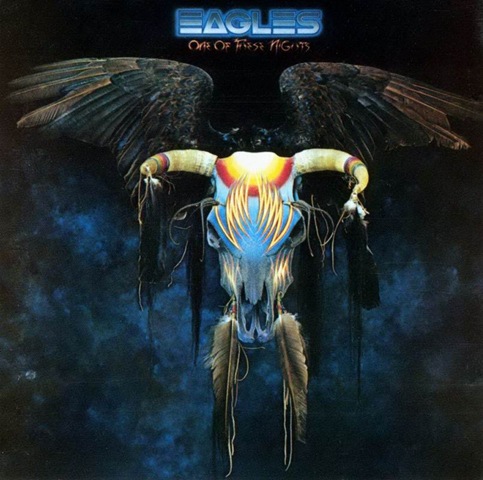
One of These Nights (1975)

1. One of These Nights
2. Too Many Hands
3. Hollywood Waltz
4. Journey of the Sorcerer
5. Lyin' Eyes
6. Take it to the Limit
7. Visions
8. After the Thrill Has Gone
9. I Wish You Peace
One of These Nights is, in many ways, the logical continuation of On the Border. Sonically, it shares much of the same DNA: tight arrangements, precision engineering, and the polished, radio-ready gleam that was fast becoming the Eagles' signature. But where On the Border still bore traces of a band working through its growing pains, One of These Nights is the work of an outfit in full control — slicker, sharper, and altogether more self-assured.
Gone, for the most part, is the earlier democracy that had once given equal spotlight to all four original members. By this stage, Don Henley and Glenn Frey had unmistakably emerged as the band’s creative nucleus, their songwriting partnership now the dominant force. That isn’t to say the others were muscled out entirely — Meisner, Leadon, and Felder all contribute meaningfully — but the shift toward a core duo steering the ship is evident in both the authorship and the tone of the material.
The most striking thing about this record, however, is its sheer range. If Desperado was a theme album, and On the Border a transitional one, then One of These Nights is an exhibition — a musical showcase that proves the band could do almost anything. Consider the three Top Five singles: Lyin’ Eyes, One of These Nights, and Take It to the Limit — each utterly distinct in style, each sung by a different member, and yet all unmistakably “Eagles.”
Lyin’ Eyes, with its laconic narrative, easy sway, and bittersweet charm, may be the quintessential Eagles track. At over six minutes, it ought to overstay its welcome — but doesn’t. The blend of country restraint and pop craftsmanship is executed with such deftness, it almost defines the band’s appeal in one stroke. Then there’s the title track — a slinky, falsetto-laden slice of ‘70s funk that, if heard in isolation, might easily be mistaken for something from Earth, Wind & Fire. It’s a bold step outside the band’s established identity — and remarkably, it works. Rounding out the trio is Take It to the Limit, an orchestral-laced power ballad that features Randy Meisner on lead, and which, despite its theatrical swell, never feels overwrought. It is also, notably, the band’s only major hit to feature Meisner as the frontman.
That such diverse singles could coexist on the same album — and all succeed commercially — is a testament not only to the band’s versatility but also to their mastery of form. It’s somewhat surprising, then, that no other tracks were issued as singles. Hollywood Waltz, with its sepia-toned charm, would have made a fine candidate. As would After the Thrill Is Gone, a brooding co-vocal between Henley and Frey that later earned its place (somewhat backhandedly) on Greatest Hits Vol. 2. Even Bernie Leadon’s I Wish You Peace, a soft, almost hymnal closer, carries a gentle sincerity that now reads like a quiet farewell — as indeed it was. Leadon would exit the group shortly thereafter, perhaps sensing that his role had diminished in the new configuration.
His other contribution, Journey of the Sorcerer, is something else entirely — a baroque, banjo-led instrumental supported by full string section. Initially jarring, and even a touch absurd, it gradually reveals its charms with repeated listens. (Fittingly, it would go on to become the theme to The Hitchhiker’s Guide to the Galaxy, which tells you everything you need to know.)
Elsewhere, Felder flexes his compositional muscle with Too Many Hands (co-written with Meisner) and Visions (co-written with Frey and Henley). Both tracks are competent, well-crafted rockers — though neither quite reaches the high watermark set by the album’s standout moments.
In the end, One of These Nights might have become the crown jewel of the Eagles’ catalogue — had it not been immediately followed by Hotel California, an album that would eclipse everything in its wake. Still, taken on its own terms, One of These Nights is a masterwork of mid-‘70s rock craftsmanship. It may not carry the mythic weight of its successor, but it has aged with effortless grace. It is the sound of a band hitting its stride — and, in hindsight, peering just over the edge of the mountain they were about to summit.
Go back to the main page
Go To Next Review